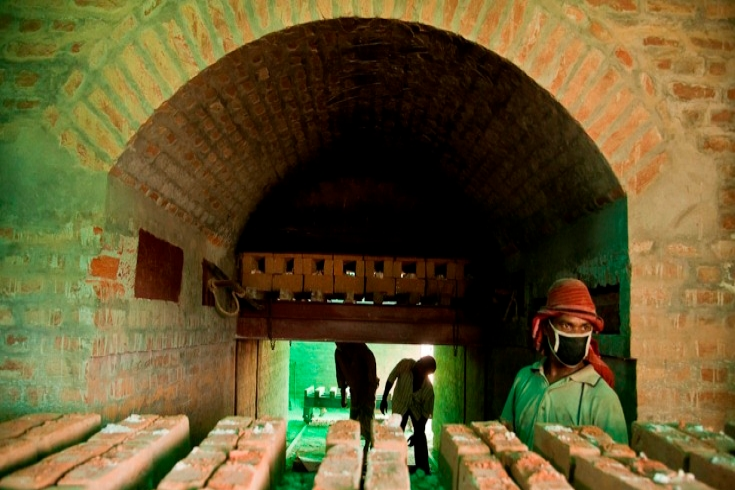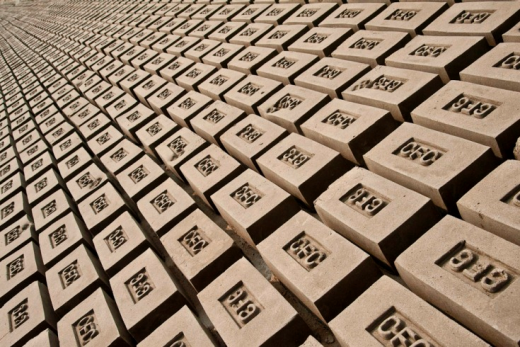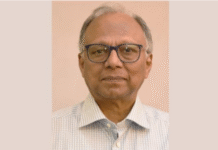
- The Clean Air and Sustainable Environment project (CASE) is the first program of its kind to tackle pollution from two of the country’s biggest polluters, brickfields and transport.
- The project pilots clean and energy efficient brick kiln technologies and improve the government’s air quality management capacity.
- The initiative promotes safe pedestrian mobility in Dhaka in order to make a shift towards less polluting transport modes.
Dhaka ranks highly amongst the world’s major cities in terms of poor urban air quality. Substantially reducing air pollution could save up to 3,500 lives and avoid up to 230 million cases of respiratory diseases annually in Bangladesh. In economic terms, this is equivalent to around US$ 500 million in savings due to reduced health care costs and increased productivity per annum. The Clean Air and Sustainable Environment project (CASE) is the first program of its kind to tackle pollution from two of the country’s biggest polluters, brickfields and transport. Through the ‘co-benefit’ approach for the environment and transport sectors, the project aims to strengthen the environmental agency’s capacity and capability to effectively address air pollution issues, as well as to ensure safe mobility for people in the capital.
Challenge
Brickfields in Bangladesh expel over 9.8 million tons of greenhouse gases into the air annually due to a combination of old technology, weak environmental legislation and enforcement and lack of corporate responsibility. Meanwhile, growing numbers of motorized vehicles are clogging up roads and contributing further to poor air quality. Besides the large number of cars, the ever-present conflict between motorized and non-motorized transport such as rickshaws means urban traffic is often brought to a standstill for long periods of times resulting in not only health and environmental damage but huge economic losses dues to lost time. What’s more, very few alternatives exist for pedestrians to walk from one place to another, exacerbating the situation further. Brick kilns and motor vehicles contribute to 60% of fine particulate pollution in Dhaka during dry season.
Approach
CASE directly tackles pollution by encouraging the adoption of cleaner brick manufacturing technologies that require less energy such as New Zig Zag Kilns, Improved Zig-Zag Kiln, Vertical Shaft Brick Kiln, Mini Tunnel or Horizontal Shaft Brick Kiln, alternative building material and Tunnel Kiln. The program is launching 20 demonstration projects that will be a catalyst in the widespread adoption of cleaner and efficient technology by entrepreneurs motivated by both the economic and environmental benefits. The project also encourages research into technology alternatives to bricks such as micro concrete, and helps the Government in strengthening environmental laws to introduce stricter standards and stronger “polluter pays” principles for industrial pollution. CASE also provides support to the newly established Air Quality Cell (AQC) that is responsible for air quality monitoring, data analysis and reporting and public information and administration.
In urban transport, CASE is promoting safe pedestrian mobility in Dhaka by actively rehabilitating and improving 70km of sidewalk with surface drainage and constructing 23 foot over bridges. It is also improving traffic management by improving 40 intersections, installing traffic signals and training the police in the enforcement of traffic signalization. Under the CASE project the feasibility study of a 20 km Bus Rapid Transit (or BRT) line from the airport to Keraniganj has been completed, and the detail design is being prepared. BRT offers a low cost high efficient solution to public transport in the congested city of Dhaka. In order to strengthen the coordination of urban transport projects and policies, the project gives technical assistance and capacity building to Dhaka Transport Coordination Authority (DTCA) to make it a pivotal institution in planning and coordination of urban transport.

Results in Numbers
- 11 Continuous Air Quality Monitoring Stations (CAMS) installed in 8 cities to monitor major air pollutants and to generate real time air quality data including air quality index for major cities
- For the first time in Bangladesh, 1 clean technology (VSBK) successfully introduced which emit around 60%-70% less particulate matter than the traditional fixed kilns.
- 2 other pilots include improved Zig-Zag and alternative building materials.
- 20 km of sidewalk and road improvement completed in Mohammadpur, 14.5 km in Tejgaon and 25 intersections being improved.
- 13 foot over bridges constructed and 10 under design or construction.
Towards the Future
As more and more people come to Dhaka in search for jobs, education, and opportunity for better life, there is a growing urgency to continue the co-benefit approach to improve air quality and safe mobility.
Source: The World Bank










The Clean Air and Sustainable Environment project (CASE) is the first program of its kind to tackle pollution from two of the country’s biggest polluters, brick fields and transport.
Comment: To me this approach to tackle the two biggest polluters would not work and it cannot be a sustainable benefit to the city. It is not a small or big pollutants, a pollutant whatever size it has is good enough to pollute the whole. A drop of cow’s urine is good enough to spoil the whole content of milk.
What we need is to identify all the pollutants in and around our surrounding and make a comprehensive plan by combining all expertise services and develop a strategic plan of operations. Factors responsible for air pollution may be air and soil born pathogen, air born dust, flowing or stagnant water, micro-organism, smoke etc. It is therefore necessary to attack the problem from all corners in an integrated manner with all expertise services. It is a team work. Continuous research back up and regular monitoring is also a must for reaching the goal.